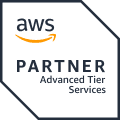As business operations continue to evolve, cloud connectivity remains at the heart of it all. AWS Direct Connect has emerged as a reliable solution for organizations seeking high-speed, secure connections to AWS. Like any other cloud service, one of the most perplexing aspects of AWS Direct Connect is surely the pricing models. The Direct Connect budgets fluctuate by up to 25% based on organizational growth and traffic patterns.
This blog aims to unravel AWS Direct Connect, how its pricing models work, and how businesses can save money without sacrificing performance.
What Is AWS Direct Connect?
AWS Direct Connect serves as a dedicated private network connection from your on-premise infrastructure to AWS. These connections are comparatively faster and more secure than traditional connections over the public internet. Direct Connect allows for real-time integration of your data center into the Cloud.
Key Benefits:
Consistent Network Performance: Bypassing the public internet results in lower latency and higher reliability - a major factor for real-time applications.
Cost Savings: Up to 70% lower data transfer costs compared to public internet rates.
Enhanced Security: Dedicated connections mitigate exposure to internet-based risks.
AWS Direct Connect allows for efficient hybrid cloud architectures, big data processing, or disaster recovery solutions. It allows for the use of low-latency connections while transferring large amounts of data.
How Does AWS Direct Connect Work?

(Image Source: AWS)
AWS Direct Connect is a service that provides a single private network connection to AWS without going through the internet and AWS services. AWS Direct Connect is very straightforward. Here's how it works:
Physical Connection: A direct fiber optic link connects your network to an AWS Direct Connect location, ensuring a highly secure and high-speed connection. Compared to internet-based connections, the physical setup ensures lower latency and higher stability.
Virtual Interfaces (VIFs): Once you get the physical link up, you configure virtual interfaces to route your traffic:
Private VIF: To access your Virtual Private Clouds to enable secured communication between your data center and AWS resources.
Public VIF: To access AWS public services such as Amazon S3 or AWS Lambda, enabling efficient utilization of these services.
Direct Connect Gateway: If you have multiple VPCs or operate across various AWS regions, the Direct Connect Gateway consolidates these connections into a single link for easier management and cost reduction.
Why Use AWS Direct Connect?
Reliability: With dedicated and redundant connections, AWS Direct Connect assures high availability and automatic failover to prevent downtime.
Scalability: Change bandwidth according to how much your business needs. This helps the connections grow with the demand.
Performance Monitoring: Tools like AWS CloudWatch can monitor your connection’s performance, including latency, throughput, and health metrics.
Deep Dive into AWS Direct Connect Pricing Structure

Although AWS Direct Connect enables a pay-as-you-go pricing model that allows you to have flexibility, it usually has hidden charges that one must keep in mind while signing up. Here’s how AWS Direct Connect pricing breaks down:
1. Port Hours
Port hours include the cost incurred by an active network irrespective of the data transmission. Pricing differs based on types and capacities of connections (dedicated vs hosted):

Key considerations:
Dedicated connections: Better suited for continuous high-bandwidth usage; better suited for large corporations because they require physical resources from AWS.
Hosted connections: Provisioned through AWS partners; ideal for mid-sized companies because they do not require dedicated links.
2. Data Transfer Out (DTO)
DTO charges for outgoing data, whether it is used via AWS or a Direct Connect connection. All Direct connect locations and the respective AWS region are charged.

3. Data Transfer In (DTI)
Any data you transfer into AWS using Direct Connect is completely free. This means that sending data from internal servers or other resources to AWS does not incur any costs. This feature makes AWS Direct Connect ideal in cases having a lot of inbound data. Examples of this include data backup or huge amounts of data migration into the cloud.
Additional Pricing Benefits
AWS Direct Connect is a service that helps businesses save costs on transferring data to and from AWS by offering a private, dedicated network connection. Here's how it works:
Lower Data Transfer Costs: It provides much cheaper data transfer rates than the standard internet rates, especially for companies with large amounts of outbound traffic. This can result in significant savings over time.
Predictable Billing: Using a dedicated connection means uncontrolled spending due to changing internet costs or increases in data consumption is avoidable. This greatly enhances the accuracy of budgeting.
Usage-Based Flexibility: Small businesses or startups can begin with connection capabilities as low as 50 Mbps, which enables them to control their growth. As the company grows, so does the operational need and the usage potential without straining the business.
Case Study: Yelp Cuts Test-Run Times by 90% Using AWS Direct Connect
Yelp.com connects users to crowd-sourced reviews and ratings of local businesses. To improve developmental and testing workflows, Yelp uses AWS Direct Connect to link the data centers to the cloud, enabling Developer & Test environments, automated testing, and staging and production services.
Results:
Improved Productivity: Test-run times reduced by up to 90%.
Streamlined Operations: Faster workflows across development and production systems.
Scalable Infrastructure: Seamless access to AWS services for growing demands.
Tools and Tips for Managing AWS Direct Connect Costs
Using AWS Direct Connect can incur costs and managing these costs would require applying specific tools and strategies to ensure efficiency. Here’s a breakdown of how businesses can reduce these costs:
AWS Cost Explorer: This tool will enable you to see the evolution of costs incurred on Direct Connect historically. It also allows you to determine and estimate your costs based on the usage trend, improving budget planning.
AWS CloudWatch: CloudWatch monitors bandwidth usage of your Direct Connect connection and can notify you of significant increases in usage. This feature helps manage budget overspend resulting from unanticipated high usage of traffic.
Tagging: Tags function as labels by which any Direct Connect usage can be grouped into separate buckets on different departments or projects. This enables easier monitoring of utilization and costing within the organization.
Best Practices
Scale Your Connections: During the testing phases, start with smaller bandwidths (e.g., 50 Mbps) and only upgrade once you're consistently using higher data volumes.
Pro Tip: Regularly monitoring bandwidth usage helps identify trends and avoid overpaying for unused capacity.
Optimize Data Transfer: Reduce outbound data by compressing files before transfer.
Pro Tip: Compress large files using tools like Gzip or ZIP, which can save storage and transfer costs.
Leverage Redundancy Efficiently: Use multiple more minor connections for failover instead of overcommitting to high-capacity links.
Pro Tip: Test failover systems periodically to ensure seamless switching during outages.
Conclusion
AWS Direct Connect would be helpful for companies in most sectors. For these companies, whether for direct or indirect use, the service is appealing because the cost is fixed, the service is much more reliable, and it has some savings potential. Knowing how pricing works is indeed the first step toward getting maximum benefit as well as minimizing cost in the process.
Are you ready to optimize cloud costs?
Join Pump for Free
If you are an early-stage startup that wants to save on cloud costs, use this opportunity. If you are a start-up business owner who wants to cut down the cost of using the cloud, then this is your chance. Pump helps you save up to 60% in cloud costs, and the best thing about it is that it is absolutely free!
Pump provides personalized solutions that allow you to effectively manage and optimize your AWS and GCP spending. Take complete control over your cloud expenses and ensure that you get the most from what you have invested. Who would pay more when we can save better?
Are you ready to take control of your cloud expenses?




